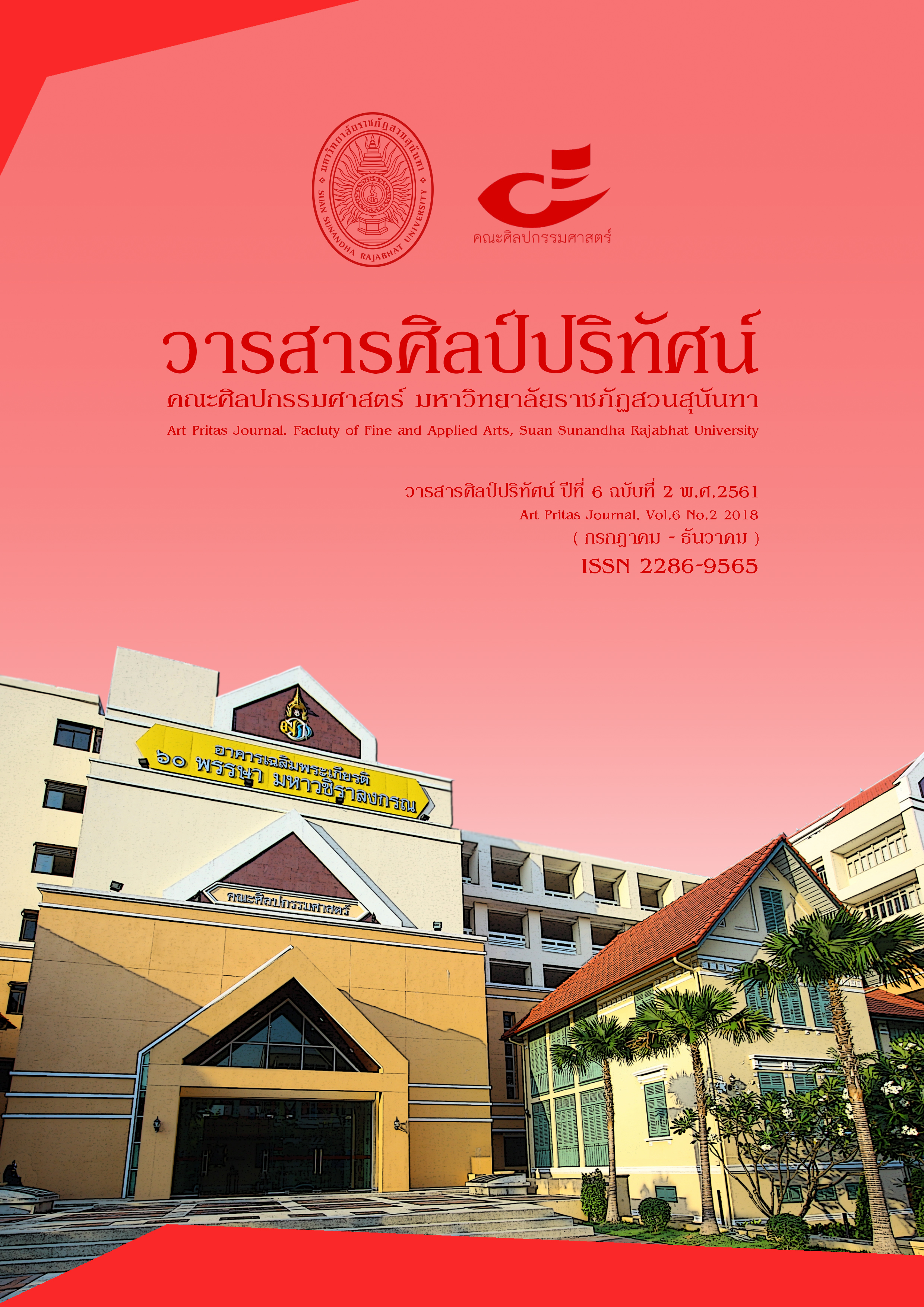The apparel design for The Blind people, in response to circumstance and usability
Main Article Content
Abstract
The objectives of this research are to study the clothing purchasing behavior of visually impaired persons and the dressing challenges which affect their daily lives and design 6 working outfits specifically for visually impaired women. This research is a mix methods research integrating qualitative and quantitative approaches. The primary data were collected by conducting a survey on the clothing purchasing behavior of the sample comprised of 50 visually impaired women aged 25-40 years old, and the challenges of getting dressed they faced. The secondary data were gathered from related books and documents. The study found that the 50 visually impaired women, the sample group selected by purposive sampling, earn 13,000-16,000 baht per month. 54% of them earn a living by selling state lottery tickets. 96 % of them seek help from sighted persons when purchasing clothes. The challenges the sample have encountered when getting dressed by themselves are the inability to identify colors, patterns, and the front/back of the clothing items without main labels, and to match clothes with suitable color and pattern, and the difficulties in putting on form-fitting clothes, clothes with back closures, and clothes that require bow tying. To address the aforementioned challenges, many techniques were employed in designing working outfits for visually impaired persons, for instance, embossing Braille designs and tactile graphics, utilizing QR code tags to provide information of the clothing items, using suitably-sized materials, buttons and zippers, and using innovative fabrics, such as wrinkle-resistant fabrics, anti-odor fabrics, collagen-coated fabrics, and temperature-regulating fabrics, to meet the needs of the sample group. These outfits would help reduce worries and give the visually impaired persons confidence in dressing and enabling them to perceive more aesthetic value of the clothes they are wearing.
Article Details
เนื้อหาและข้อมูลในบทความที่ลงตีพิมพ์ในวารสารศิลป์ปริทัศน์ ถือเป็นข้อคิดเห็นและความรับผิดชอบของผู้เขียนบทความโดยตรง ซึ่งกองบรรณาธิการวารสารไม่จำเป็นต้องเห็นด้วย หรือร่วมรับผิดชอบใดๆ
บทความ ข้อมูล เนื้อหา รูปภาพ ฯลฯ ที่ได้รับการตีพิมพ์ในวารสารศิลป์ปริทัศน์ถือเป็นลิขสิทธิ์ของวารสารศิลป์ปริทัศน์
References
ชาญณรงค์ พรรุ่งโรจน์. (2542). ศิลปะเด็กพิเศษ. กรุงเทพฯ : โอ.เอส. พริ้นติ้ง.
นิคอเละ ระเด่นอาหมัด. (2543). ทฤษฎีจิตรกรรม = Theory of painting.กรุงเทพฯ : โอเดียนสโตร์.
ปรัชญา กฤษณะพนธ์. (2557). แนวทางการออกแบบชุดกีฬาโกลบอลจากผ้าเคลือบยางกันกระแทก.กรุงเทพฯ: สถาบันเทคโนโลยีพระจอมเกล้าเจ้าคุณทหารลาดกระบัง.
ภารตน์ เสนาลา และคณะ. (2554). เครื่องนุ่มห่มสำหรับคนพิการ. กรุงเทพฯ : โอ.เอส. พริ้นติ้ง.
วิมลสิทธิ์ หรยางกูร. (2535). พฤติกรรมมนุษย์กับสภาพแวดล้อม มูลฐานทางพฤติกรรมเพื่อการออกแบบและวางแผน. กรุงเทพฯ: จุฬาลงกรณ์มหาวิทยาลัย.
ศรีประไพ จุ้ยน้อยและคณะ. (2552). เครื่องนุ่งห่มคนพิการทางร่างกาย การออกแบบและทดลองสวมใส่ของคนพิการทางการเคลื่อนไหว. กรุงเทพฯ: สำนักงานคณะกรรมการวิจัยแห่งชาติ.
Yang, X., Yuan, S., & Tian, Y. (2014). Assistive clothing pattern recognition for visually impaired people. IEEE Transactions on Human-Machine Systems, 44(2), 234-243.

